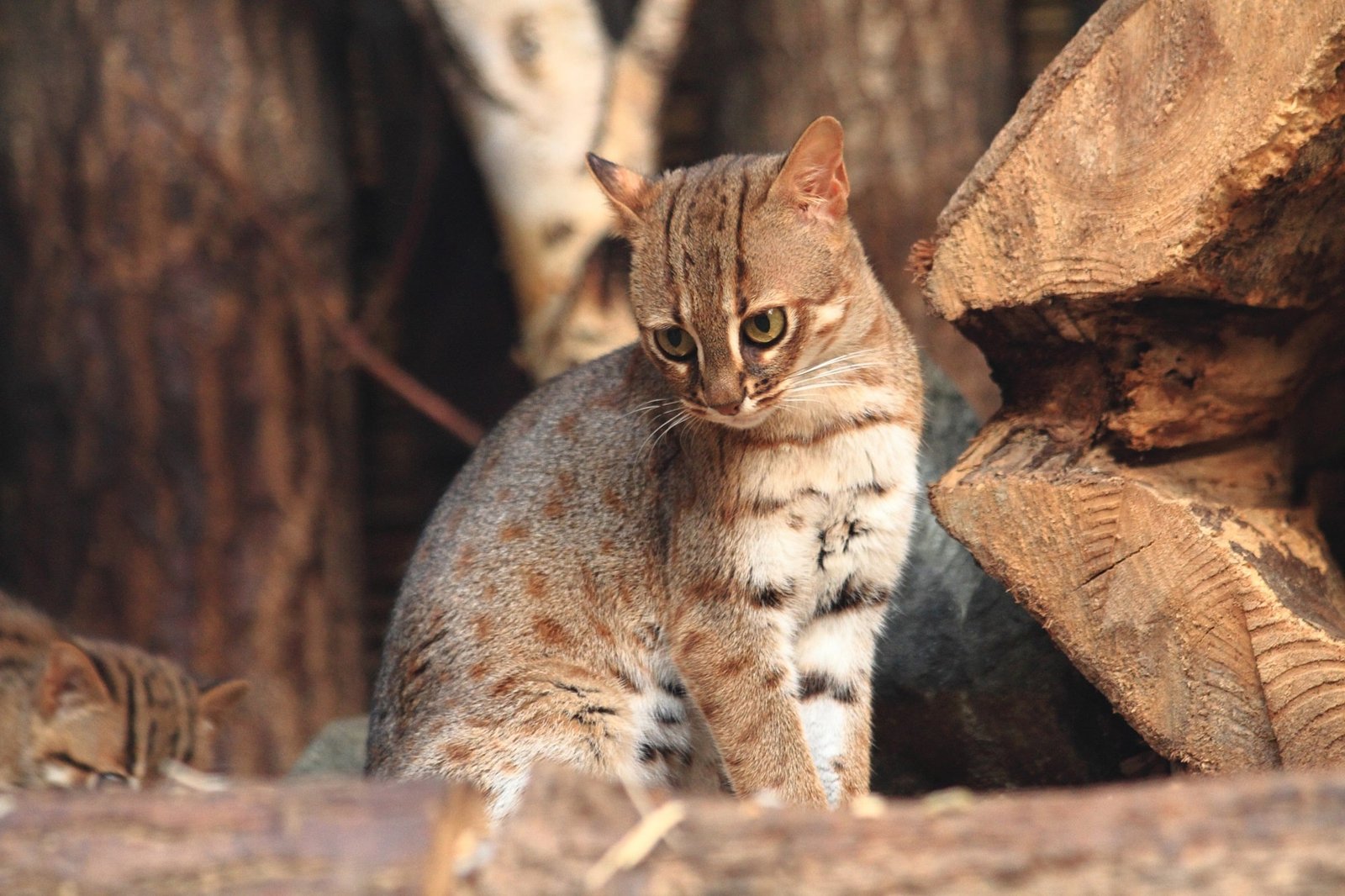
Rusty-Spotted Cat (Prionailurus rubiginosus)
- The rusty-spotted cat (Prionailurus rubiginosus) is one of the smallest wild cat species. native to India and Sri Lanka.
- It has distinctive rusty-red fur with small dark spots. and its tail is ringed and tipped with a black spot.
- These cats are mainly nocturnal and have a solitary lifestyle, with a diet consisting of small birds, and insects.
- Rusty-spotted cats are elusive and rarely seen in the wild. making them a challenging species to study and conserve.
- Conservation status: They are listed as Near Threatened due to habitat loss, making conservation efforts crucial for their survival.
Introduction:
The Rusty-Spotted Cat is a small wild cat species native to India and Sri Lanka. Scientifically known as Prionailurus rubiginosus, it is one of the smallest cat species in the world, often compared in size to the Black-Footed Cat (Felis nigripes) and the Kodkod (Leopardus guigna). Despite its diminutive size, the Rusty-Spotted Cat is a fascinating and ecologically important species, with unique characteristics and a distinctive appearance.
Physical Characteristics:
Size and Weight: Adult Rusty-Spotted Cats typically weigh between 1.5 to 3.5 pounds, with a body length ranging from 14 to 19 inches and a tail length of 7 to 12 inches. They are noticeably smaller than domestic cats.
Coat and Coloration: The name “Rusty-Spotted” is derived from the cat’s unique coat pattern. The fur is short, soft, and covered with small rust-colored spots, with a white underbelly. The tail is ringed and ends with a black tip. The coat pattern serves as effective camouflage in their natural habitat.
Habitat and Distribution:
Rusty-Spotted Cats are primarily found in deciduous forests, scrublands, and grasslands of India and Sri Lanka. They are highly adaptable and can be found in both dry and wet habitats. The distribution of this species is limited, and they are often associated with areas of dense vegetation, providing cover for their small size.

